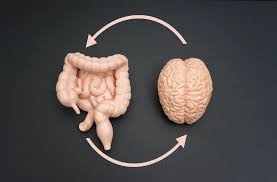
Breaking News
30-06 vs. 5.56: Hard-Hitting vs. High Velocity
 Black Friday Shopping Guide for the Privacy Geek
Black Friday Shopping Guide for the Privacy Geek
 A lifeline for American farmers: Aid and trade deals on the horizon
A lifeline for American farmers: Aid and trade deals on the horizon
 Decoding Your Teen – #SolutionsWatch
Decoding Your Teen – #SolutionsWatch
Top Tech News
 First totally synthetic human brain model has been realized
First totally synthetic human brain model has been realized
 Mach-23 potato gun to shoot satellites into space
Mach-23 potato gun to shoot satellites into space
 Blue Origin Will Increase New Glenn Thrust 15-25% and Make Rocket Bigger
Blue Origin Will Increase New Glenn Thrust 15-25% and Make Rocket Bigger
 Pennsylvania Bill – 'Jetsons Act' – Aims To Green-Light Flying Cars
Pennsylvania Bill – 'Jetsons Act' – Aims To Green-Light Flying Cars
 New Gel Regrows Dental Enamel–Which Humans Cannot Do–and Could Revolutionize Tooth Care
New Gel Regrows Dental Enamel–Which Humans Cannot Do–and Could Revolutionize Tooth Care
 Researchers want to drop lab grown brains into video games
Researchers want to drop lab grown brains into video games
 Scientists achieve breakthrough in Quantum satellite uplink
Scientists achieve breakthrough in Quantum satellite uplink
 Blue Origin New Glenn 2 Next Launch and How Many Launches in 2026 and 2027
Blue Origin New Glenn 2 Next Launch and How Many Launches in 2026 and 2027
 China's thorium reactor aims to fuse power and parity
China's thorium reactor aims to fuse power and parity
 Ancient way to create penicillin, a medicine from ancient era
Ancient way to create penicillin, a medicine from ancient era
We've wiretapped the gut-brain hotline to decode signals driving disease

Researchers from the University of Cambridge and Dartmouth College developed a device thinner than a human hair designed to sit between colon layers unnoticed, capturing signals sent up to the brain and pulses it received in return. This crucial information pathway makes up the enteric nervous system (ENS), an often overlooked branch compared with the sympathetic nervous system and parasympathetic nervous system. The ENS, with up to 600 million neurons – made up of 20 different types of these nerve cells – is the gatekeeper of the gastrointestinal tract, involved in all its complex processes and movements, and plays a key role when things go wrong.
"Because the ENS neural activity is 'dampened' down under anaesthesia, the ability to record in awake animals is crucial, as it allows recording of the ENS while the animal experiences stress or during and after eating," explained lead researcher Róisín Owens, from Cambridge's Department of Chemical Engineering and Biotechnology. "This new technology will build a better understanding how the gut and brain communicate, and it could lead to new treatments for digestive and neurological disorders."



